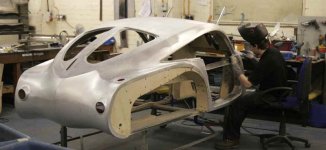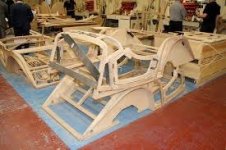Aluminum hoods is one thing. Aluminum in the wheel wells is quite different. I wonder how it will hold up to rock chips and salt, road grime, etc... we'll find out in a few years one way or the other.
Well, that is why there are things called wheel well liners. Let's look at this at a different angle. The hood and fender wells on the front of my semi truck is fiberglass. You would think rocks would pretty well beat that up, especially since I run the truck down gravel roads a couple of times a week. But no, the wheel well liners protect it. Salt and road grime has less of an effect on aluminum than steel.
The auto and pickup OEM's are actually a little late to the party. Except for the hood on my semi truck which is fiberglass, the entire rest of the body is aluminum. The wheels are aluminum. The exposed side fuel tanks are aluminum. All the frame attached boxes are aluminum. Even the 5th wheel that has to pull a 53' long, 102" width trailer (aluminum plate trailer, all aluminum except axles) that has to haul 46,000+ regularly, is aluminum. Yep, Alcoa aluminum 5th wheel. The frame is steel, but I could have opted for an aluminum frame also. Price caused me to balk. Even the twin rear drive axles are aluminum housing Meritor 14x axles. One is going to have to explain why it is a semi truck primarily built of aluminum has no problem running 10-20 years in the rust belt, to the tune of 120,000+ miles a year, in rain, snow, salt and calcium chloride, and is not falling all apart.
Not quite sure why an aluminum pickup causes some to cringe. And it is pretty lame of GM to poke fun at it. Just because they don't have the candle power to do it themselves. Oh, in the spirit of full disclosure, I own a 2015 2500 Silverado, so I have standing to take all the shots I want at GM I wish.
And aluminum can't stand up as well as steel? Well the typical box van semi trailer, there is NO frame underneath! That's right! No frame except a couple of rails where the axles slide on. There are cross members under the floor, but the entire load and structural integrity of the tailer is done by the walls of the trailer. And plate trailers like I use, the walls are .5" thick aluminum panels riveted together. The cross members under the wood floor are aluminum, and again, riveted to the aluminum rail that attaches to the aluminum side wall panels. And I have no problem loading up ten 4500 lb steel coils for a customer, including the heavy forklift that is running in and out of the trailer loading them.




